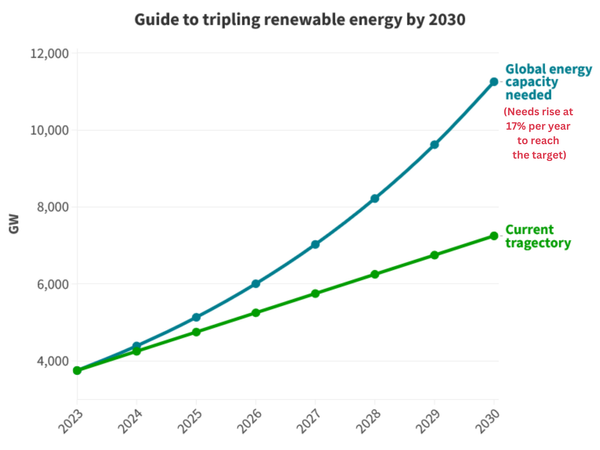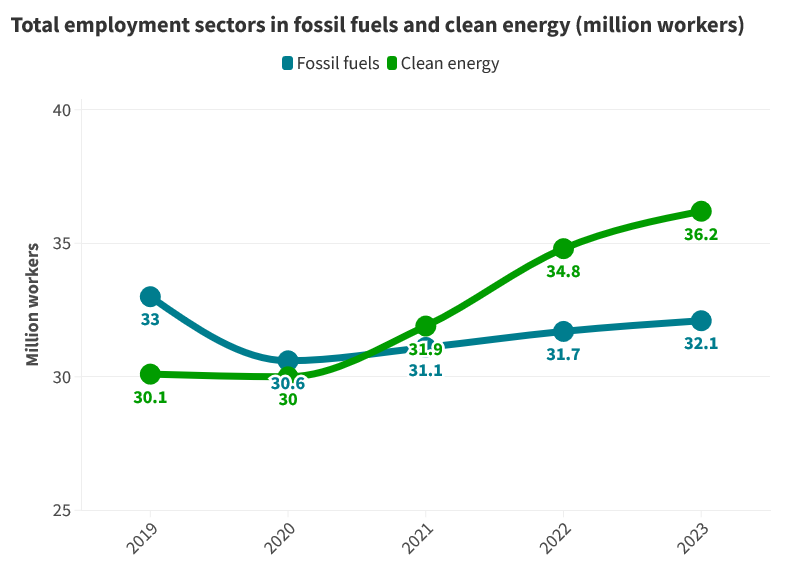The shocking environmental cost of cryptocurrencies
On Monday, April 4, 2022, The Working Group III of IPCC issued its report on climate change mitigation progress. One chapter raised the concern about the large amount of energy consumed by digital technologies.

On Monday, April 4, 2022, The Working Group III of IPCC issued its report on climate change mitigation progress. One chapter raised the concern about the large amount of energy consumed by digital technologies.

Since IPCC's last report in 2014, the popularity of cryptocurrencies has intensified. With everything available in the comfort of one click away on a smartphone, people’s desire to get rich quickly has led to more demand for cryptocurrencies. As of writing this article, more than 18,000 cryptocurrencies are currently in circulation.
When the world’s first cryptocurrency, Bitcoin was introduced in 2009 by Satoshi Nakamoto in the hope to enable instantaneous decentralized and borderless transactions without the high fees, probably little did anyone know that a decade on, it would be followed by competitive alternative cryptocurrencies and would be caught in the debate of massive electricity consumption.
Bitcoin energy consumption
Bitcoin’s decentralized structure becomes the main reason for its huge energy demand because to verify transactions, miners require speedy, power-hungry computers to beat other miners. It takes about 10 minutes per transaction, whereas a VISA transaction takes less than a second and uses roughly 1/500,000 of the energy. With the increasing popularity of Bitcoin and other cryptocurrencies, more people compete to be miners, which only accelerates this proof-of-work mechanism and makes the negative environmental impact a bigger issue.
To meet the demand, the current Bitcoin miners need highly specialized computers, big space, and a cooling system to constantly cool the hardware from overheating, which all are equally energy-intensive. According to Alex de Vries, a Paris-based economist, at the start of 2021, Bitcoin alone was generating more e-waste than many midsize countries.
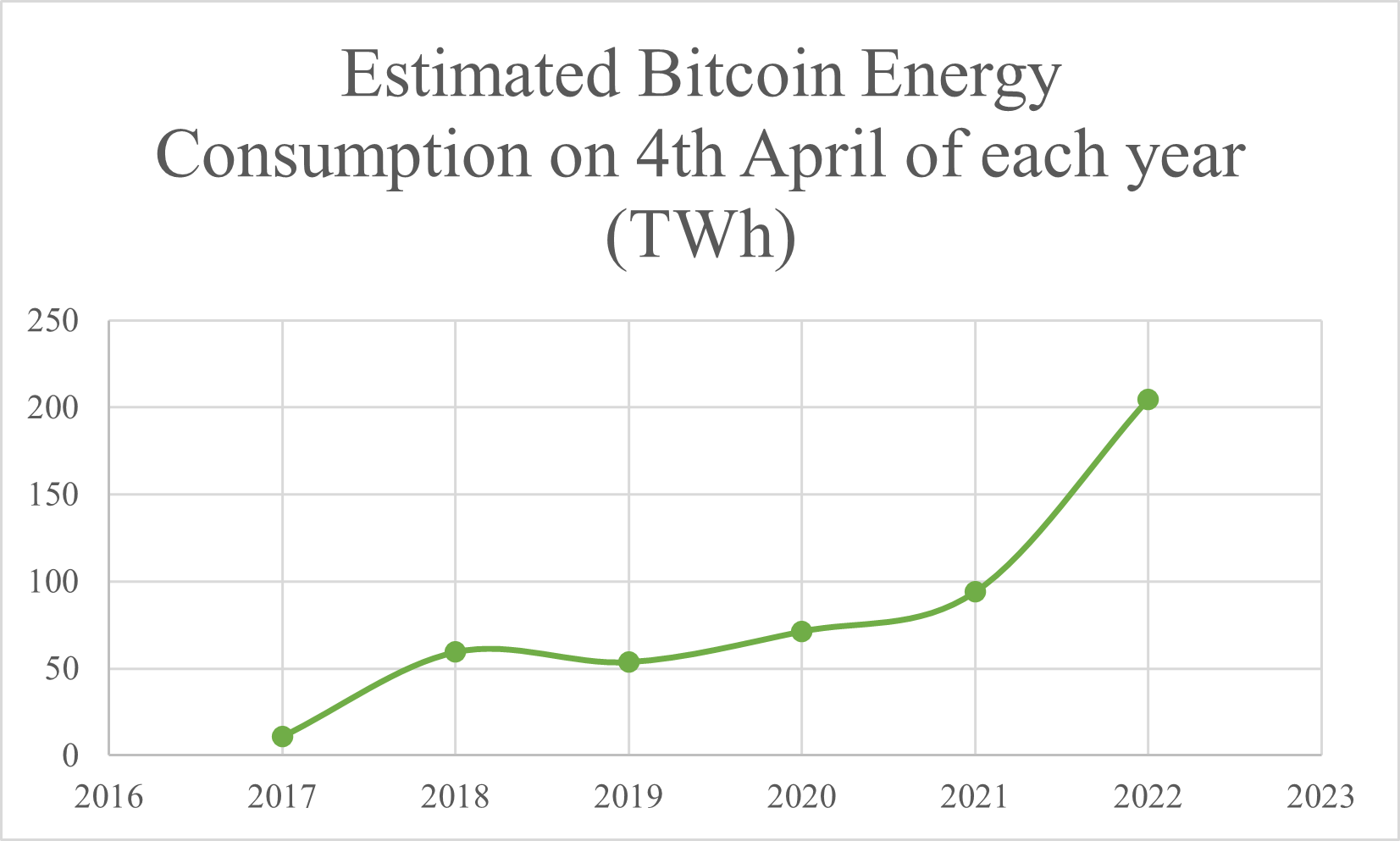
Figure 1 demonstrates the estimated energy consumption, recorded on the 4th of April of each year from 2017 until this year (2022). In the year 2017, the estimated energy usage in Bitcoin transactions was 9.59 TWh, which began rising steadily as its popularity increased, reaching 73.39 TWh in 2018. Except for 2019, when some securities issues slowed down the mining processes, the energy consumption increased drastically. This year, the energy consumption was 204.50 TWh. If bitcoin were a country, it would be consuming more energy than Egypt, Poland, and Thailand per year, as shown in Figure 2.

The new report published in 2021 stated that Bitcoin mining consumes 0.5% of all electricity used globally. Although mining happens all over the world, for years, much of it happened in China until the country announced the stopping of the activity. The Top 5 countries to mine bitcoin in July 2021 after China’s announcement are shown in Figure 3. Currently, the USA is the biggest miner with 46%.

The most power-hungry cryptocurrency bitcoin requires approximately, 1173 kWh of energy per transaction. To have a broader view of energy usage it can be compared with other popular cryptocurrencies, such as Ethereum, Bitcoin Cash, Litecoin, Cardano, and Dogecoin as shown in Figure 4.
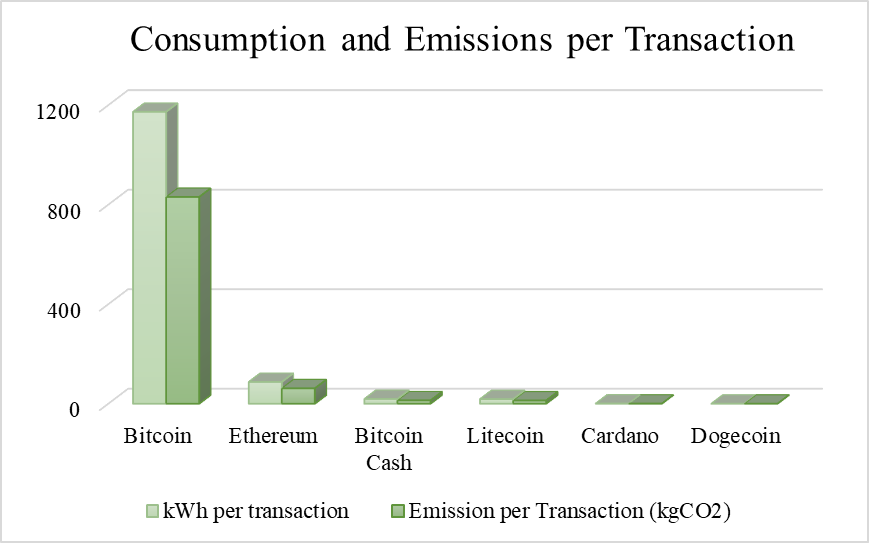
From the comparison, it can be distinctly observed that the energy required to make one bitcoin transaction uses 13 times more than Ethereum. When Ethereum converted to proof-of-stake from proof-of-work, it dramatically reduced the energy consumption of Ethereum-based cryptos and blockchains by an estimated 99.5%. The massive use of energy required for cryptocurrency also leaves a carbon footprint and is harmful to the environment. The question now is where do these energies come from?
Source of energy
Although Bitcoin mining consumes a huge amount of energy, energy consumption does not have to be equivalent to carbon emissions if mining has been done using renewable energy. In December 2019, one report suggested that 73% of Bitcoin’s energy consumption was carbon-neutral, largely due to the abundance of hydropower in major mining hubs such as China and Scandinavia.
A 3rd Global Cryptoasset Benchmarking Study published in September 2020 estimated the use of renewable energy for proof-of-work mining as an average of 39%. Another research stated that Bitcoin mining got dirtier after the Chinese mining crackdown. The report calculated the carbon footprint of a single Bitcoin transaction is approximately 1181.01 kgCO2, which is equivalent to 2,617,537 VISA transactions. The electronic waste produced by a single bitcoin transaction is approximately 353.70 g.
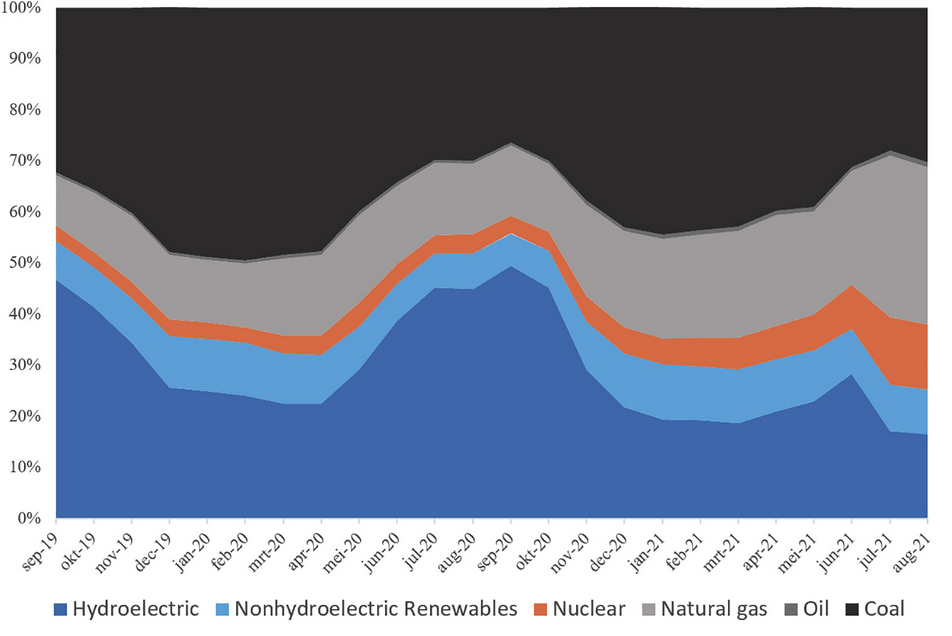
Figure 5 estimates the energy mix that fueled the Bitcoin network from September 2019 to August 2021 as taken from the article “Revisiting Bitcoin’s carbon footprint”, published in February 2022. The article demonstrates that the share of renewables decreased from 41.6% to 25.1% following the mining crackdown in China in July 2021.
It is believed that after China’s crackdown, miners were forced to move to countries, such as the U.S. and Kazakhstan. Because these locations mainly fuel Bitcoin miners with non-renewable electricity, the carbon intensity of the electricity has increased. The article also suggests that the average carbon intensity of the Bitcoin network may have increased from 478.27 gCO2/kWh on average in 2020 to 557.76 gCO2/kWh in 2021.
With the continuous increase in the cumulative energy demand of Bitcoin mining and varieties of cryptocurrency, the only solution is a transition towards renewable energy. Otherwise, a dividing opinion can lead to the banning of crypto mining, just like in China.

